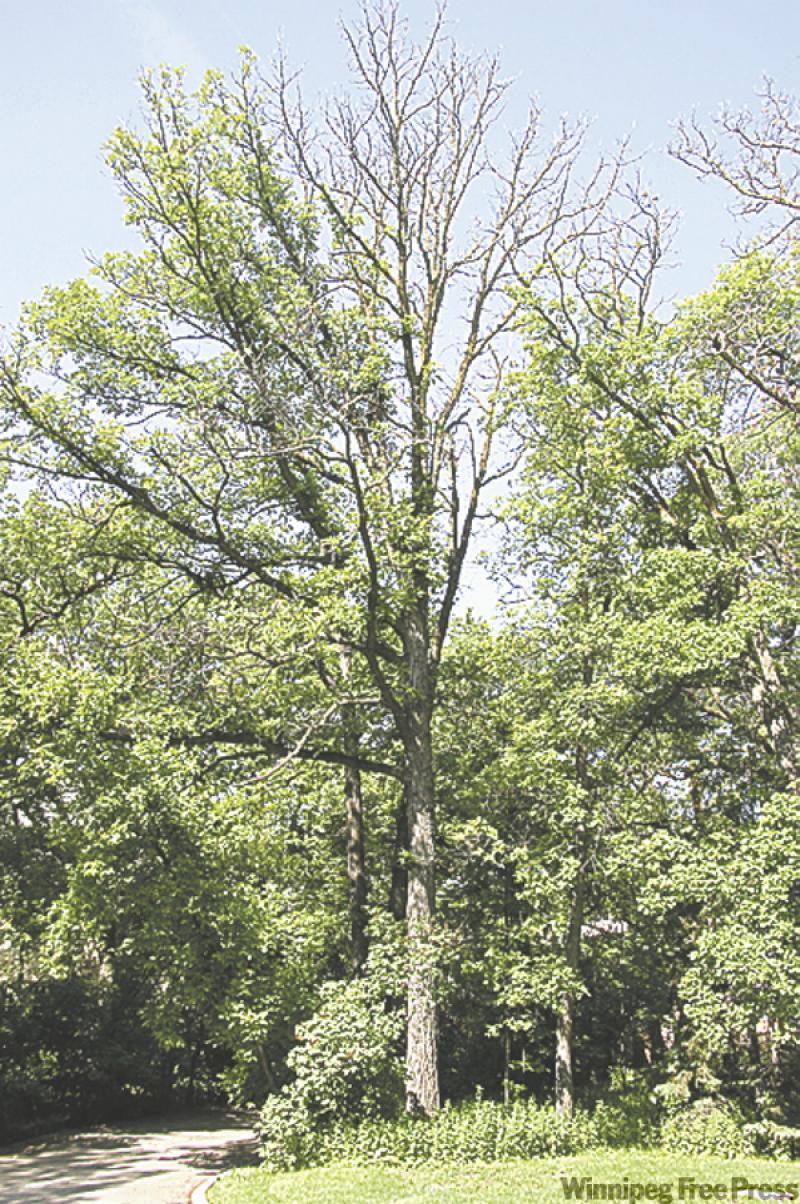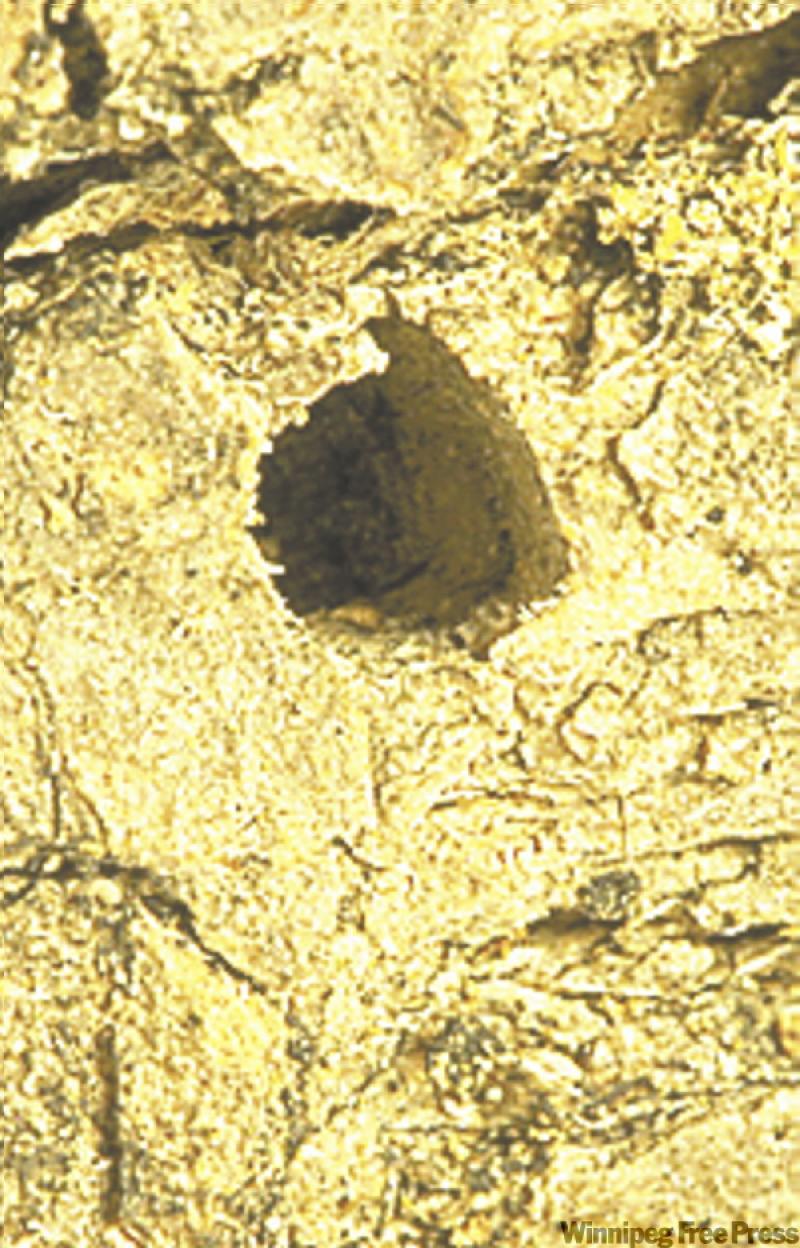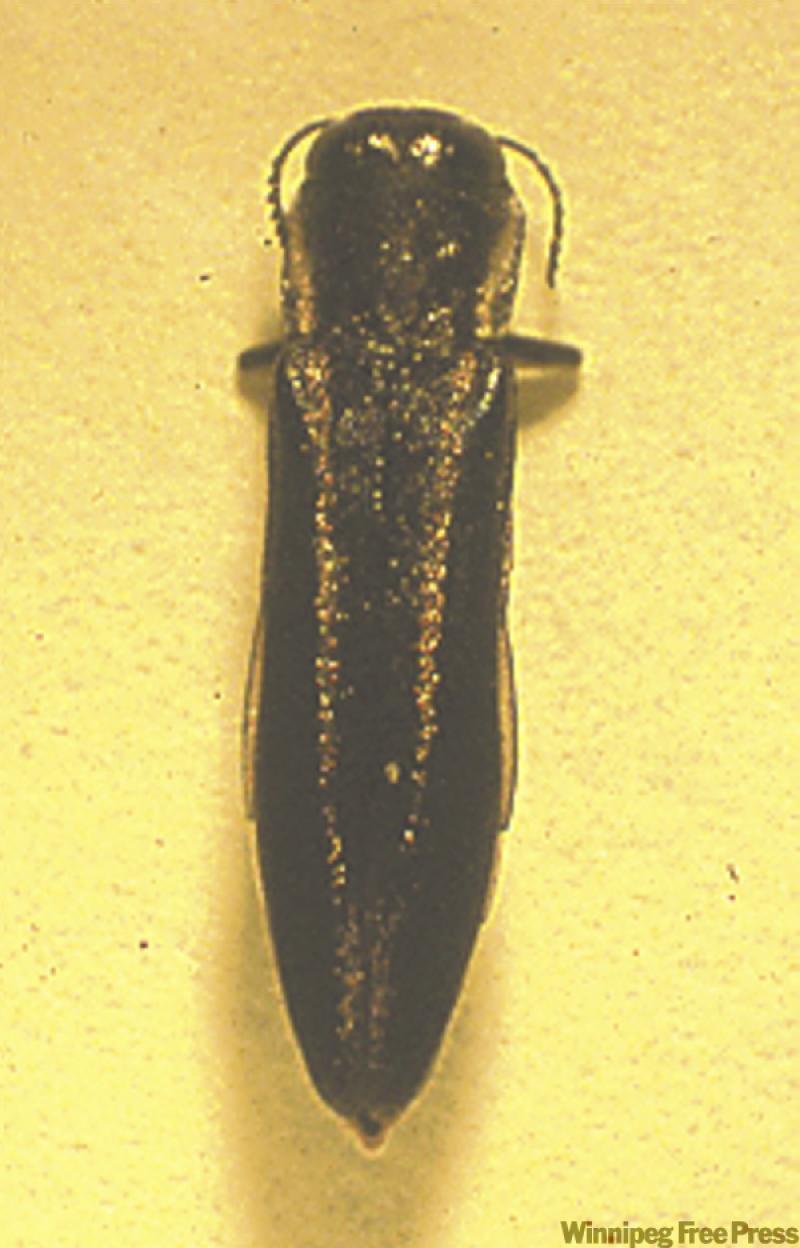


Ever since I discovered what was causing our native bur oaks -- many more than a century old -- to die back in 1989, I have noticed more and more of them dying each year.
The killer is a small beetle called the two-lined chestnut borer (Agrilus bilineatus). The adult is a black beetle that has two prominent yellowish stripes down its back. In its grub or larval stage, it aggressively feeds on the living cambial wood cells just under the bark, starting at the top of the tree and working down.
The early signs of aggressive feeding will produce a dying-back of the upper branches across the top of the crown. Each year will see more branches dying below the previously killed branches. The grub's feeding activity can kill whole trees in two to five years.
Unfortunately for the oaks, the feeding activity of the two-lined chestnut borer spreads various fungal diseases which also contribute to the death of the tree.
There is no approved chemical treatment for the control of this borer in Manitoba. Early removal of borer-infested branches, dead branches and dead trees must be done as soon as possible. These actions will help to slow the spread of this devastating insect.
In the last three years I have seen entire oak leaves discolour and die during the summers. When the leaves drop prematurely, the twig dies. As more and more twigs die, whole branches will die. It doesn't take long for the combined feeding of the borer and fungus diseases to kill the crown.
One or more confirmed fungal canker diseases have been associated with the severely stressed oaks. A canker disease is one in which the twigs, branches or trunks produce slits or fissures which open up into roughly oval shapes. The diseases discovered so far in Winnipeg are Coniothyrium, Phoma, Cytospora and Endothiella. There are no fungicidal controls for these tree diseases as they occur inside the tree.
Arborists often discover that these diseases and branch diebacks were initially prompted by non-fungal causes. Stresses can arise through de-icing and anti-icing salt sprays near heavily used roads. Construction and heavy compaction will create oak root stresses leading to these diseases. Compaction drives the air out of the soil, thereby depriving the roots of their ability to breathe.
No other mature tree suffers from root stresses as easily as the native bur oak. Even adding a few inches of topsoil over the original grade can make an oak susceptible to canker diseases because it can have a root-smothering effect. I have also noted that oaks produce these symptoms when growing in lawns where heavy applications of weed-killer herbicides have been sprayed. Perhaps a soil test might reveal the presence of high levels of toxins that are affecting the roots.
Are there treatments that property owners can use to help alleviate the oak stress problem?
1. Stressed oak trees need to be properly diagnosed as early as possible to determine the causes. Oaks can be very sensitive to changes in their root environment and may react very quickly to the stress. It may be necessary to get a bio-assay done of the infected leaves and twigs from a diagnostic plant laboratory.
2. Avoid the use of herbicides around oak trees up to 20 to 25 feet from the trunk. This is the area where the absorbing roots occur. The herbicide residues move through the grass and can easily kill the fine nutrient-absorbing oak roots.
3. Proper fertilization at least once a year in spring or fall for at least three continuous years helps to slow down some canker diseases in their early stages of development. Fertilizer is a source of basic nutrients such as nitrogen, phosphorus, potassium, calcium and iron that allow the tree to build compartmentalization walls around the internal fungal diseases.
This treatment must be done in the very early stages of the disease infection. Fertilization will also help the tree deal with borer infestations. Healthier trees can deal with problems affecting their growth more quickly than unhealthy trees.
4. Removing early infected twigs and branches as well as dead branches must be done as soon as possible. Pruning tools must be sterilized with a disinfectant such as bleach and water (1 to 9 ratio), denatured alcohol or methyl hydrate after each cut in live tissue. If you have this work done by an arborist, be sure that the working crew is prepared to sterilize their pruning tools. Chainsaws are not normally sterilized. If this is not done the disease can easily be spread around the tree with each cut. Dead trees must be removed as soon as possible.
5. Collecting early fallen leaves during summer and fall each year should be undertaken. Disease spores on the leaves can easily reinfect the same or other nearby oaks.
A great many of these oaks have been around since before Winnipeg became a city. If these oaks were man-made structures they would be protected as heritage structures. Now, with the threat of diseases and insects, our older native bur oaks could soon be just a memory.
Michael Allen is a consulting urban forester and certified I.S.A. arborist and owner of Viburnum Tree Experts. He can be contacted by calling 831-6503 or by e-mail at viburnumtrees@shaw.ca You can also mail questions to Michael Allen, c/o Newsroom, Winnipeg Free Press, 1355 Mountain Ave., Winnipeg, MB, R2X 3B6. His website is www.treeexperts.mb.ca



